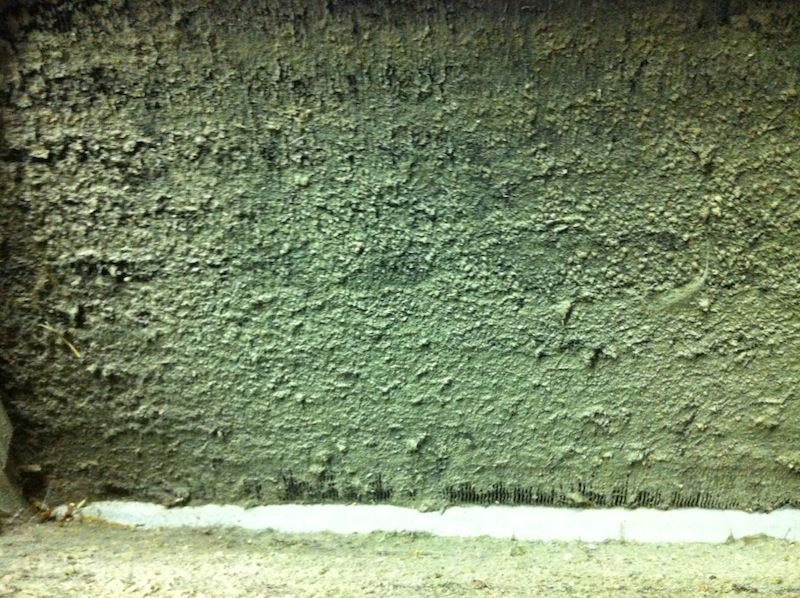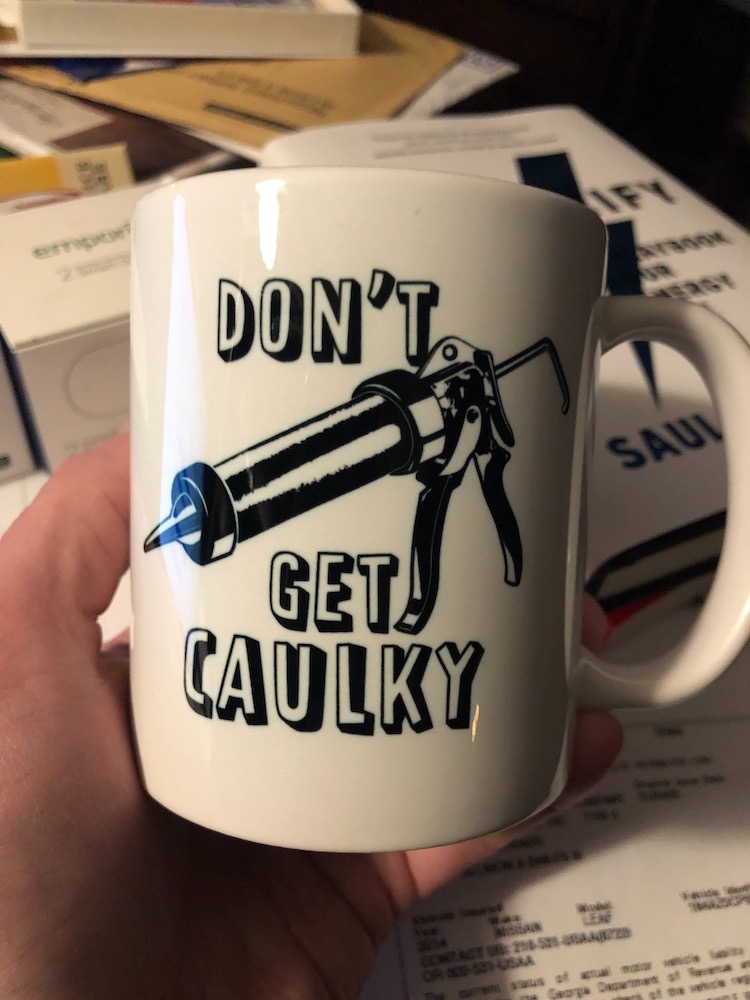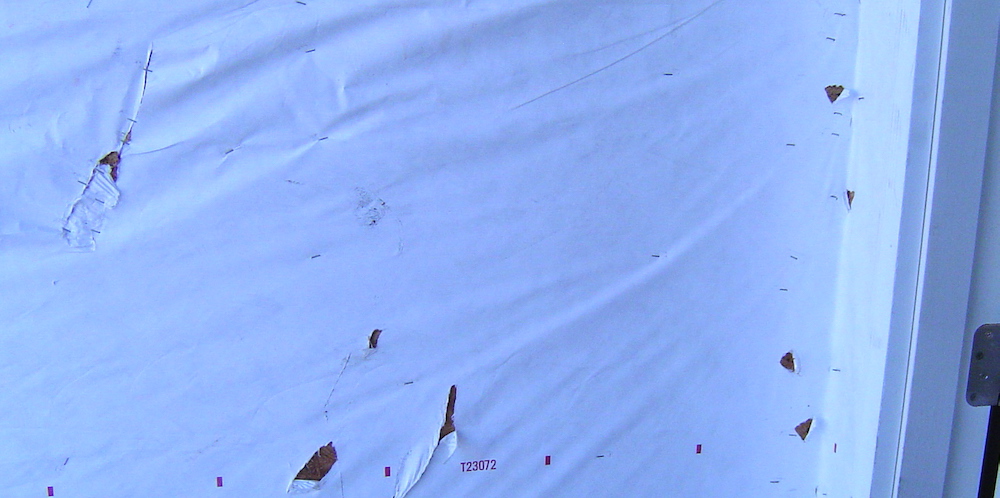10 Building Science Lies to Watch out for

This past week I learned the truth about another one of many building science lies. It’s the first one in my list here. Having my eyes opened to that lie made think of some of the other ones out there. Well-meaning people throw them around so much they seem true. But they’re not, or at least not without caveats. My list here is certainly not complete, but here are ten building science lies you should watch out for.
1. Algae grows on the air conditioner coil, drain pan, and condensate line. It seems that all the HVAC contractors and technicians I hear talk about that gunk on air conditioner coils, drain pans, and condensate call it algae. The life sciences aren’t my strong suit, but someone made me aware that nearly all algae needs sunlight to grow. There’s no sunlight inside your air conditioner, so that gunk is probably a goulash of skin flakes, dust mite carcasses, bacteria, fungi, and who knows what else.
2. All homes in the South spend more on air conditioning than on heating. I love to ask what people think about this when I speak to groups in the South. Most people get it wrong, unless they suspect I’m asking a trick question. I track my bills. I’ve looked at a lot of other homes. And I’ve done a lot of energy modeling. They all show that unless you’re in the hottest parts of the South, you’re probably spending more on heating than on cooling.

3. Weatherstripping the doors and caulking the windows are great ways to improve a home’s energy efficiency. This is the one that gets me riled up every fall. A lot of media sites publish their stories on winterizing your home, and they usually lead with that bad advice. Here’s why I say don’t caulk the windows!
4. Replacing the windows in an older home can cut the energy bills in half. Depending on how bad the windows are and how much window area there is, it’s almost impossible to cut your energy bills—or even your heating and cooling bills—in half by replacing them.
5. The right temperature is all you need for comfort. Air temperature is only one of six factors that affect your thermal comfort. Two of them are personal (metabolic rate and clothing), and what’s going on in the building includes four factors of comfort.
6. Spray foam insulation can solve all your insulation and air leakage problems. Just getting spray doesn’t guarantee airtightness. It doesn’t guarantee high quality insulation. It doesn’t guarantee low bills. My article on some of the pitfalls of spray foam insulation is the most popular article I’ve published here.
7. Heat pumps don’t work in cold weather. How about we ask Gary Nelson, cofounder of The Energy Conservatory? He lives in a 2,500 square foot house. He heats it with an 18,000 BTU/hr ducted mini-split heat pump…with no auxiliary heat! Read about his cold climate heat pump experience here.

8. House wrap is a good air and vapor barrier. House wrap can work well as an air barrier. It’s rarely installed in a way to do so, though. Most house wrap also is not a vapor barrier, no matter how many times people call it one. Tyvek Home Wrap, for example, is actually very permeable to water vapor.
9. You don’t need to worry about a little bit of uninsulated area in your building enclosure. Think that uninsulated attic hatch or pulldown stairs isn’t costing you much on your heating or cooling bills? Think again. Even 1 percent of your attic left uninsulated can reduce your average R-value by 27% in an otherwise R-38 attic.
10. A house needs to breathe! I’ve been railing about this since before I started this blog in 2010. It’s also such an important building science lie that I used it in the title of my book: A House Needs to Breathe…Or Does It? (It’s due out this fall. Get on the book update list to be among the first to get a copy.) No, we don’t need or want random leaks in the building enclosure. Airtightness is the most cost effective measure we can take to improve indoor air quality, comfort, durability, and energy efficiency.
When new information comes your way, it’s easy to believe stuff that isn’t true if it comes from someone who seems like they know what they’re talking about. But they may have gotten that information from someone who seemed to know, who got it from someone who seemed to know, who got it from… You get the idea. That’s building science lies propagate. To find the truth, do some digging. And here’s a great tip for you: There’s a lot of great information in books!
Allison A. Bailes III, PhD is a speaker, writer, building science consultant, and the founder of Energy Vanguard in Decatur, Georgia. He has a doctorate in physics and writes the Energy Vanguard Blog. He also has a book on building science coming out in the fall of 2022. You can follow him on Twitter at @EnergyVanguard.
Related Articles
Winterizing Your Home? Don’t Caulk the Windows!
5 Myths about Home Energy Efficiency
Is an Unvented Gas Fireplace More Efficient Than a Condensing Furnace?
Comments are moderated. Your comment will not appear below until approved.
This Post Has 4 Comments
Comments are closed.

The opposite of true is false. Can we all stop calling false beliefs lies? I want to refrain from attributing to malice what can be explained by ignorance.
Allison! I can’t wait for your book to come out! I’m holding off on renovating my 98-year old bungalow until I get my hands on a copy. And I’m keeping my fingers crossed that we can get started and get our big projects done in time for her 100th birthday party!
Another good one here in Australia is that heating systems can be sized using the rule of thumb of 125 watts per square metre of floor area. No Manual J heat load calculation for us!
Allison, I have to call you out on this one:
5. The right temperature is all you need for comfort.
This one is true in my opinion. I agree that the “right temperature” is a function of the other 5 comfort variables, but it is the easiest one to control. Unfortunately, we often do a terrible job of controlling it.